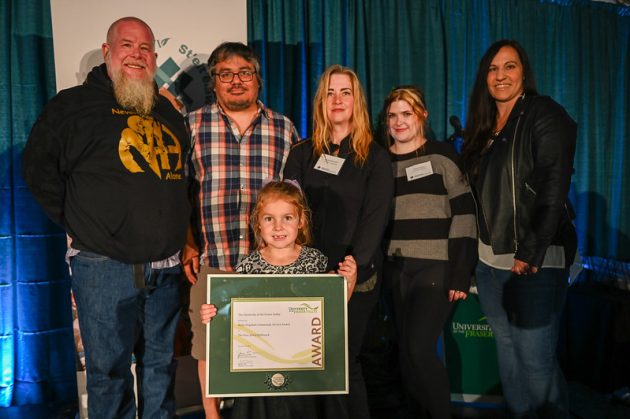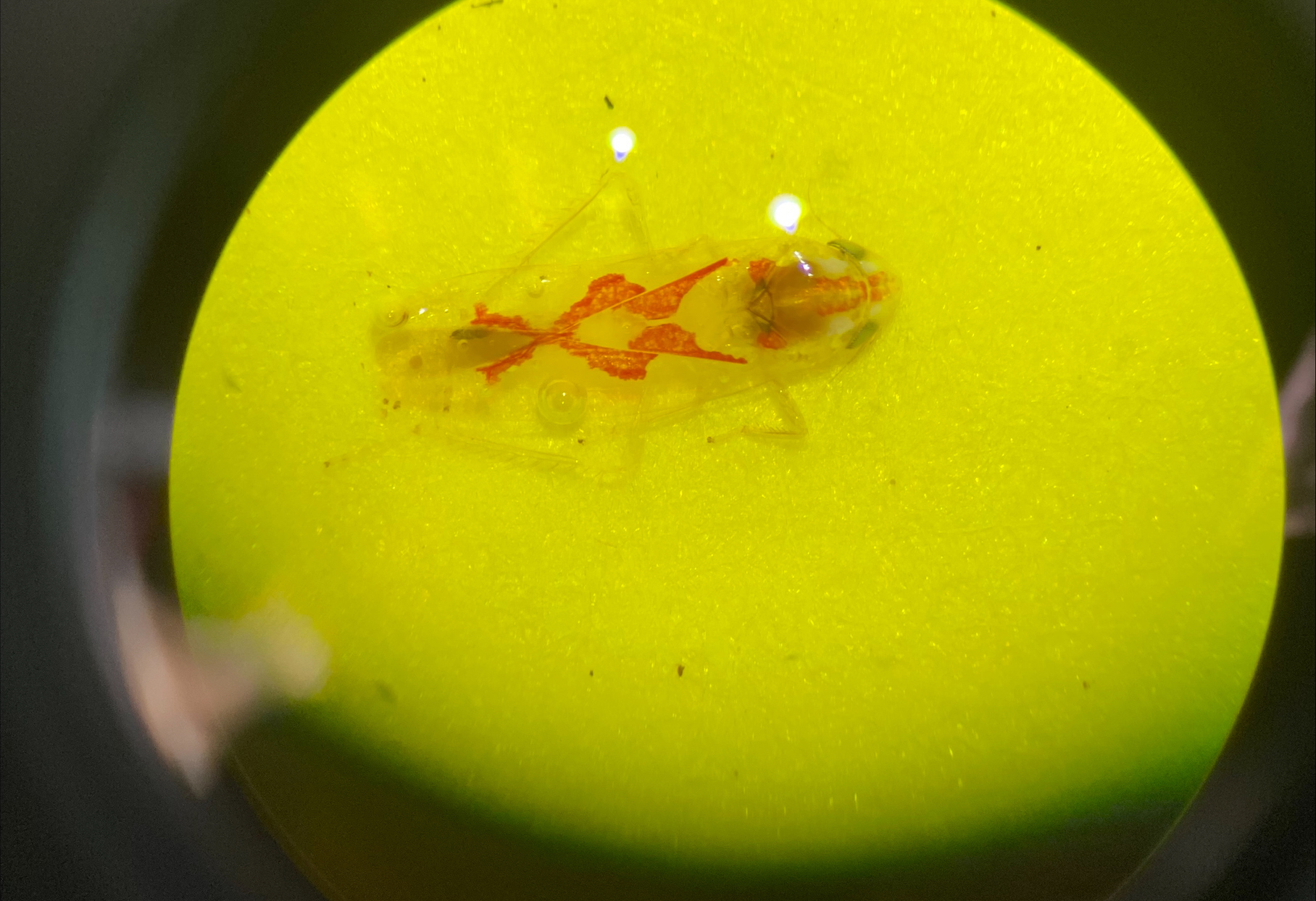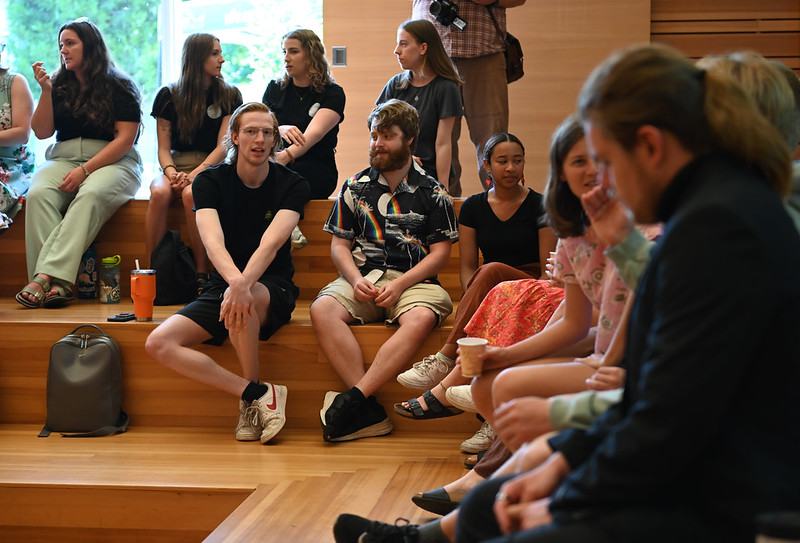UFV alumna’s Indigenous artwork offers light above a dark past
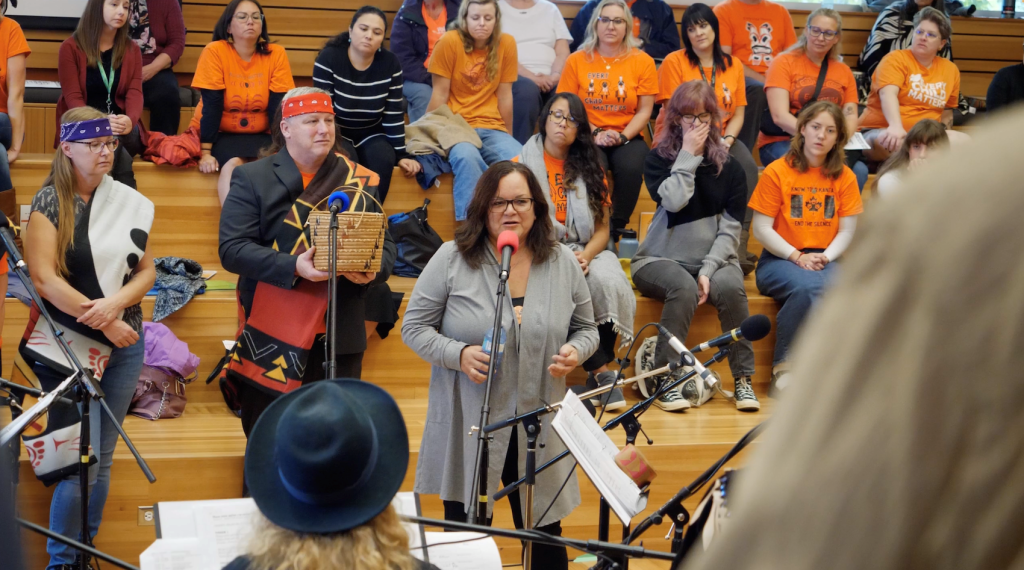
The work of a UFV alumna was front and centre at last week’s Chowiyes-Xwithet/Rise Up–Wake Up gathering on the Chilliwack campus. Stó:lō artist Bonny (b.wyse) Graham (Dip GDC ‘86) created the powerful logo that was featured on the program cover and displayed on two large screens. Everyone who came to the CEP Gathering Place on Sept 28 left with a copy of Graham’s design, in sticker form.
“I got a lump in my throat seeing it in that space,” says Graham. “With everything that was happening that day and the sea of orange that was in that room, you could feel the energy of everyone wanting to have understanding and be the change.
“When I saw my work up there, it made me hopeful.”
Each project Graham has worked on during her 25 years as a professional artist carries meaning, with purpose behind every element. The Rise Up –Wake Up group asked her to create this one to symbolize the music of Good Medicine Songs (Éy St’elmexw St’elt’ílém), featured performers at Rise Up–Wake Up. Indigenous drumming is deeply connected to the music they create, so Graham made the logo round and tan in colour to represent that instrument.
“I like working with circles because of their connection to traditional Coast Salish imagery, stemming from the origin of the spindle whorl design,” she says. “I tend to create imagery that has balance and symmetry.”
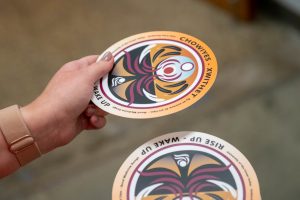
Inside the large circle is a smaller circle packed with symbolism. The eye is immediately drawn to a tiny figure at the very bottom, surrounded by darkness.
“That part is pretty literal, a small child oppressed in the dark,” Graham says. “To each side are the shapes of shovels that represent things being buried. Not just physically, but mentally and emotionally. Language, culture, traditions. Everything that identifies the person, the child, being buried in the darkness.”
But as the eye travels up there is a sense of lifting, of hope. Outstretched hands represent support, the rising music, and the process of waking up, from dark to light. The circle is split in half with darkness below and light above. In the air swirl black feathers representing reconciliation and the reclaiming of language, culture, and traditions. At the top is a light blue circle emblematic of the sky, and within that circle is a smaller white circle depicting the light.
The elements work together to create a sense of movement, eliciting the feel of a beating drum.
“It portrays hope and the future and bringing everything that’s happened out into the open, with the hope that in truth and reconciliation there can be healing,” Graham explains.
It took about six weeks to design the logo, working closely with the musical group members, and Graham says it was an emotional process. With projects like this, “The thinking time is equal to the creating time,” she says. Graham works through stages to achieve a meaningful image, mindful of the message and direction of those who look to her for impactful representation.
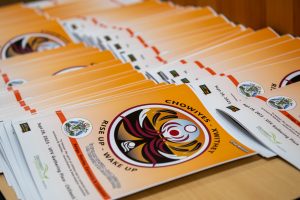
“It was an emotional journey, for sure,” Graham says. “I felt sadness about those who have been lost, and for the survivors among us today. But I also felt hope that with awareness, and the voices of this Halq’eméylem singing group, people will come to understand and learn compassion and support for the survivors and their families.
“I think (and hope) there are many ambassadors being created right now, in the wake of Truth and Reconciliation.”
Graham graduated from UFV (then Fraser Valley College) in 1986. Her work has been featured at the 2010 Olympic Winter Games, YES Vancouver NRT symposium, NWAC, and in Man Turned to Stone T’xwelatse book. Locally, her projects can be seen at Chilliwack General Hospital, Chilliwack Primary Care, BC Parks offices, SD33, the Stó:lō Resource Centre, the UFV Chilliwack campus, and the Vedder Bridge roundabout.
For more information and to view her Halq’eméylem art products, visit www.bwyse.ca.



